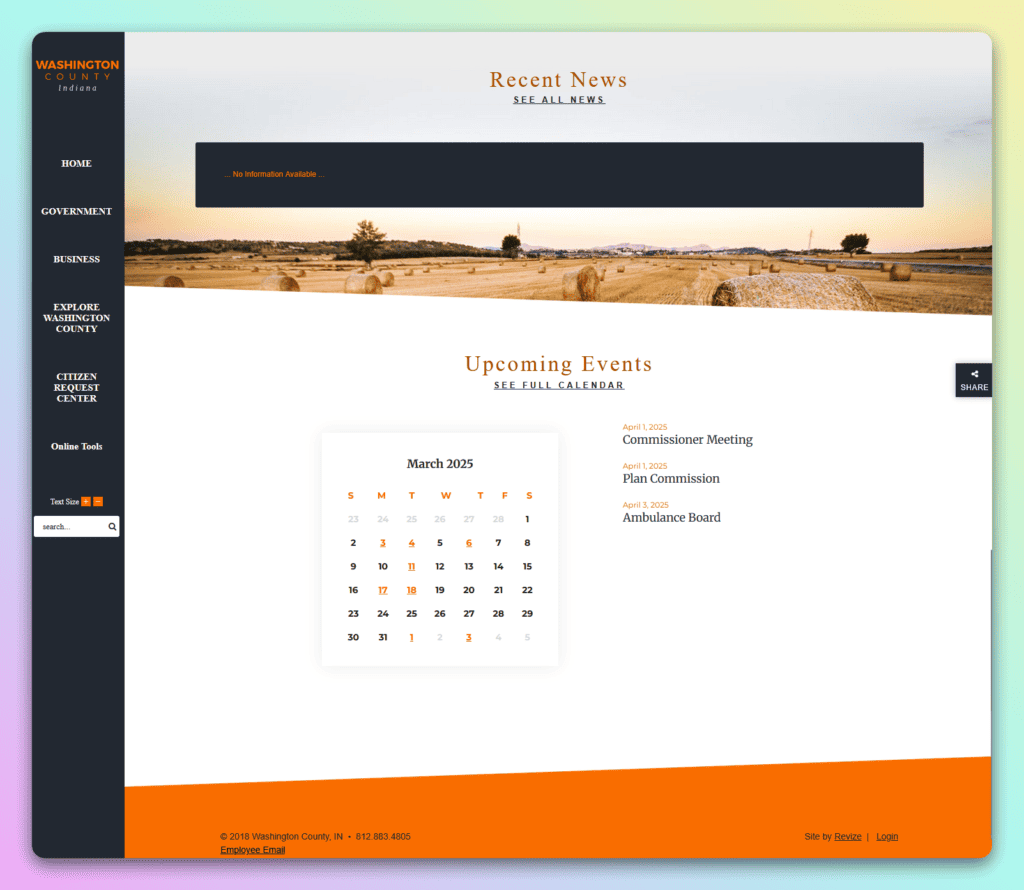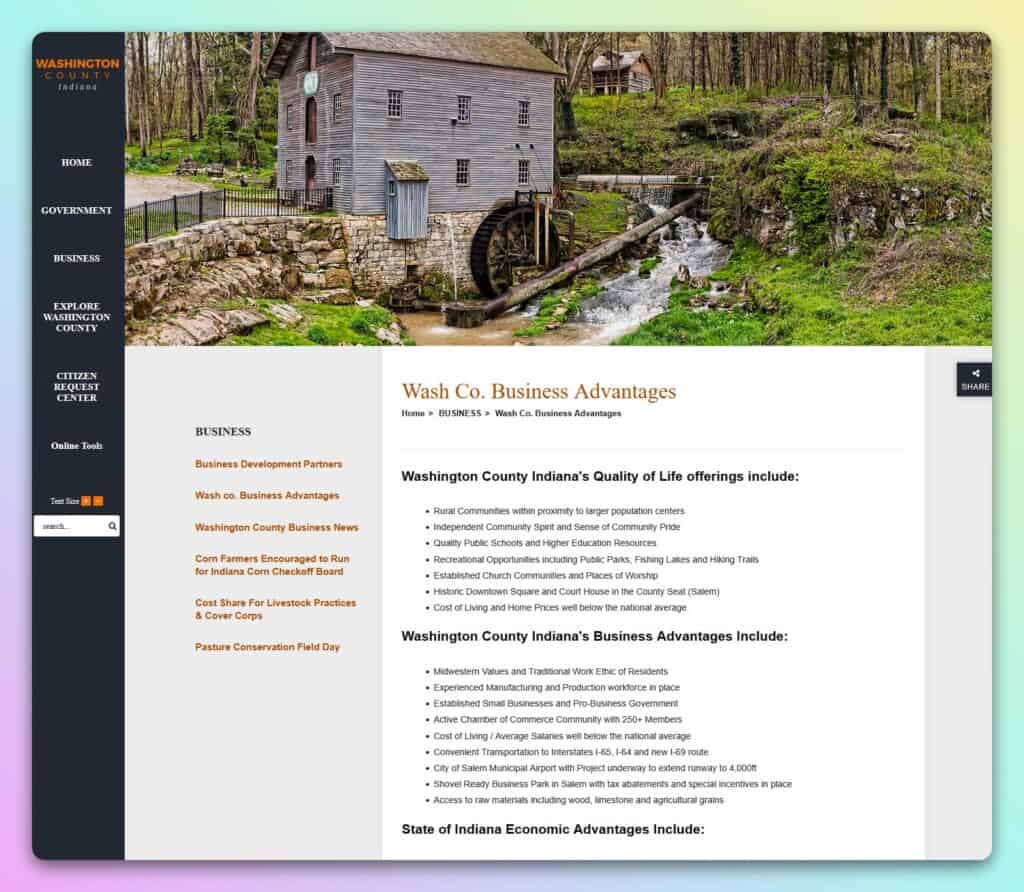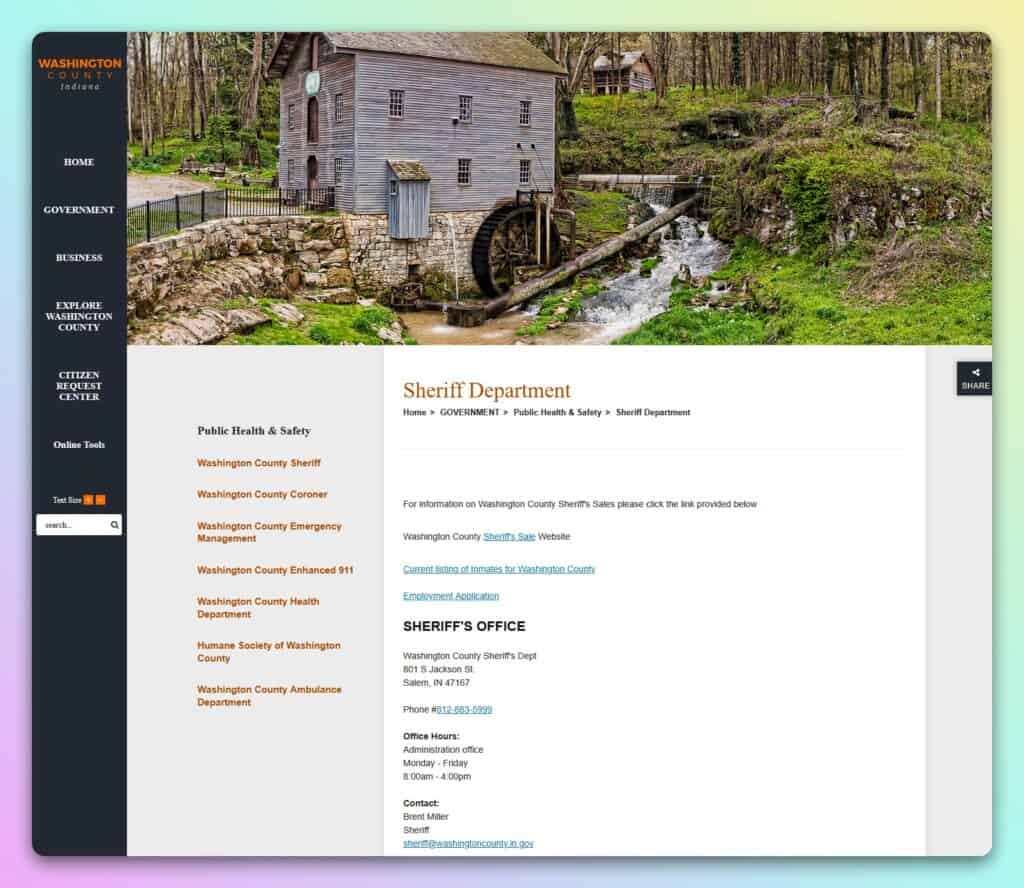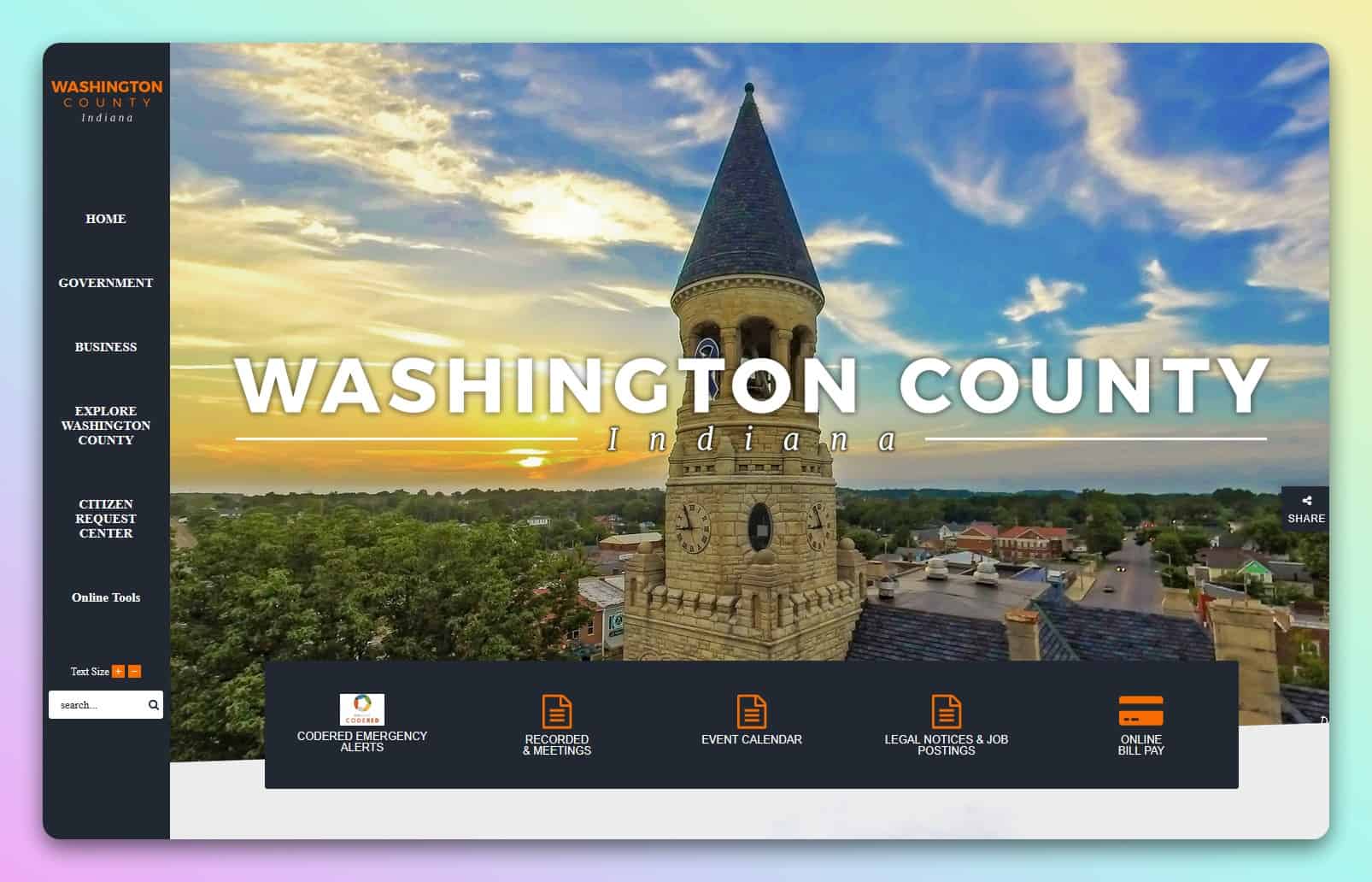When I talk to my students about organizing websites, they invariably start with a few stalwart ideas:
- A homepage
- An About page
- Contact page
- Some generic top-level page, like “Services”, “Menu”, etc.
And that’s about it. What a bummer.
Small businesses, governments, and organizations face a unique challenge on the web precisely because they’re small. People don’t go to those sites as a means of wasting time. They go there to fulfill a specific need. In some ways, however, it’s a lot like going to Amazon or Apple.com. You go there because you have a specific need, not to doddle.
With possible exception of Carmel’s website, government websites all do the same thing:
- They are organized by department and unit, not by task. For most people, “Pay my taxes” and “Pay my speeding ticket” is just “pay the government.” They do not know or care what the Treasurer, Clerk, or some other obscure department does or handles what.
- The websites are “Word Doc Copy Pasta,” where some government employee was tasked with pulling together information “for the website” and they, or a series of other low-level employees across various units all cobble together a Word doc. Then, the one person in all the county or city copies this into webpages.
The result is a website organized in a way the employees understand. And every page was written by someone who had no business writing that page because they are too close to the problem, overburdened by other tasks, and does not care.
It shows.
Let’s take a look at Washington County, Indiana’s government website.
The homepage features a big, poorly edited photo of the courthouse. It is a crappy photo taken on a typical battleship-gray Midwestern day. How do I know? The tree line in the background’s horizon line shows the fade. And the bell tower appears to be glowing like it’s white hot.
There has almost never been a sunset that looked like that in Washington County ever, because that kind of sky is what you get over water, not a landlocked county in a mostly landlocked state.
Across the side are obscure menu items, plus some top-level items like legal notices and whatever “Recorded and Meetings” is. There is also an emergency alerts page, which no one has ever needed or used because there is rarely an emergency of any magnitude there.

Scrolling down the page contains some useless text that just prattles off a list of towns. No links to anything.
Then a stock, templated slide carousel. The photos have nothing to do with squat. None of those photos were even taken there, because “Business” has nothing to do with this woman and her dog and there are mountains visible in the background. There are, at best, some large hills in Washington County. There is a water slider for “Government”. Slippery slope indeed.

Down below that is a list of Recent News. There is none. And some upcoming events that are auto-populated based on standing schedules. Fine enough, I guess.

If we go into a page, say the Leadership, you get a list of trustees that was pasted from Word as a table, like a phone book. No links on the email addresses. No links on the phone numbers (handy for the virtually 80% of using a phone all day for this) and it doesn’t even fit or let you scroll. Someone thought this was “okay”.

You can visit a Photo Tour page. It has 8 photos. I think. I can’t tell because they load so small.

There is a “Business Advantages” page. The material on this page is a series of generic bullet points that, were it not older than ChatGPT, seems like it could have been written by AI.
This is where students start to struggle, because as you look at this you realize you could swap the name of the county for basically every other county in the country. “Quality public schools and higher education resources” is not anything. There are no institutions of higher education in Washington County. IU Southeast is about an hour’s drive away in decent weather. And of the three high schools in the county, one frequently gets a D or F rating. Only Salem High School has an “A” rating by the State DOE.
“Historic Downtown Square and Court House in the County Seat” is applicable to 90 of Indiana’s 92 counties. Marion and Madison Counties would be an exception.

The Sheriff’s Department page is maddening. Not even an online tip form. But the information here contains a few links to some admittedly useful third-party aggregator services, and the rest is Googlable.

Nearly every page on this site is like this.
Washington County’s government site is what I call a “rude website.” It is rude because, as I explain to my students, it is beyond acceptable that a person working two jobs, or raising kids and working two jobs, should be told, “Oh, uh, yeah, just call us.” Or like most of these pages, the implication is you should just come into the office.
This is expensive, time-consuming, and rude.
It is expensive and time-consuming for staff to constantly have to answer what are surely the same questions repeatedly over the phone or in the office.
It is rude to residents. It would be like if you walked into a jewelry store and said, “I’d like to see some watches” and the jeweler said, “Oh, sure. Just go online and you can see them.” Despite the actual products sitting right there on a shelf.
In class, I cite the City of Hammond’s housing assistance program, which encourages residents to visit their office during business hours minus the hour the staff takes for lunch. They know, of course, that the number of slots available for such a program for such people is virtually zero. The task, then, is “Spend an hour busing across town, lose your work hours, and come in here between your first and third shifts so we can tell you “No” to your face.” It would, it seems, just be kinder and more compassionate to just not have the program at all.
But in Washington County they don’t have those kinds of programs. Washington County’s problem is it’s rural, under-developed, and barely scraping by with some of Indiana’s lowest per-capita income rates.
What the County needs in a website is a system designed to save everyone time and not be so downright misleading. The information should be architected around tasks, like:
- Pay a bill, fine, or citation
- Get a permit
- Start a business
- Consider moving to Washington County
- File a complaint or issue
- Find your representatives or elected leaders
Among dozens of others.
Each of those pages will be packed full of logical next steps. To take one example, a “Pay a bill, fine, or citation” should include ways to pay tickets with the Sheriff’s Department, City of Salem PD, Indiana State Police, and other units. All of whom use different mechanisms. That page should also have links to Pay Property Taxes. I’d argue it even needs to have information about paying income or sales taxes, even if that just leads off to IN.gov, since it is a state-level matter.
Moving to Washington County should compete and sell on what Washington County has in spades: space, quiet, a connection to nature, and some genuinely very good schools.
Starting a Business should literally start at Step 1, which involves creating a business entity registration with the Secretary of State. A task that Washington County’s government leaders miss entirely because their assumption is some executive from some big factory or manufacturer will absolutely land there and be wowed by their white-hot glowing courthouse and plop down a zillion jobs. When the reality is, job growth in the county is going to come from within, from small businesses.
Even more maddening is the fact Washington County’s leaders and taxpayers no doubt paid thousands of dollars for this. It’s a template sold over and over to suspecting counties around the country. The developers sell the template and do not help with the hard part — writing stuff — and move on. It fulfills the “We got a new website” checkbox. I assure you no Commissioner has a clue what is on this site. They have no clue what it could be doing. This is not their fault, but it is their problem. This requires a deep understanding of what is needed and how.
The literal face of this county for most people starts online, and it is rude. Stop being rude.

